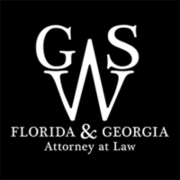
Syfert Injury Law Firm
Your Trusted Partner in Personal Injury & Workers' Compensation
Call Now: 904-383-7448
Your Trusted Partner in Personal Injury & Workers' Compensation
Call Now: 904-383-7448
(Code 1981, §20-2-152.1, enacted by Ga. L. 2007, p. 279, § 3/SB 168.)
- Multiagency task force of Georgia Commission for the Deaf or Hard of Hearing addressing educational needs, § 30-1-5.
- Ga. L. 2007, p. 279, § 1/SB 168, not codified by the General Assembly, provides: "This Act shall be known and may be cited as the 'Deaf Child's Bill of Rights Act.'"
Ga. L. 2007, p. 279, § 2/SB 168, not codified by the General Assembly, provides: "(a) The General Assembly finds that:
"(1) Students with low-incidence disabilities, as a group, make up less than 1 percent of the total state-wide enrollments for kindergarten through grade twelve; and
"(2) Students with low-incidence disabilities require highly specialized services, equipment, and materials.
"(b) The General Assembly further finds that:
"(1) Deafness involves the most basic of human needs, which is the ability to communicate with other human beings. Many deaf and hard-of-hearing children use an appropriate communication mode, sign language, which may be their primary language, while others express and receive language orally and aurally, with or without visual signs or clues. Still others, typically young deaf and hard-of-hearing children, lack any significant language skills. It is essential for the well-being and growth of deaf and hard-of-hearing children that educational programs recognize the unique nature of deafness and ensure that all deaf and hard-of-hearing children have appropriate, ongoing, and fully accessible educational opportunities;
"(2) It is essential that deaf and hard-of-hearing children, like all children, have an education in which their unique communication mode is respected, utilized, and developed to an appropriate level of proficiency;
"(3) It is essential that deaf and hard-of-hearing children have an education in which teachers of the deaf and hard of hearing, psychologists, speech therapists, assessors, administrators, and other special education personnel understand the unique nature of deafness and are specifically trained to work with deaf and hard-of-hearing pupils. It is essential that deaf and hard-of-hearing children have an education in which teachers of the deaf and hard of hearing are proficient in the primary language mode of those children;
"(4) It is essential that deaf and hard-of-hearing children, like all children, have an education with a sufficient number of language mode peers with whom they can communicate directly and who are of the same, or approximately the same, age and ability level;
"(5) It is essential that deaf and hard-of-hearing children have an education in which their parents or guardians and, where appropriate, deaf and hard-of-hearing people are involved in determining the extent, content, and purpose of programs;
"(6) Deaf and hard-of-hearing children would benefit from an education in which they are exposed to deaf and hard-of-hearing role models;
"(7) It is essential that deaf and hard-of-hearing children, like all children, have programs in which they have direct and appropriate access to all components of the educational process, including, but not limited to, recess, lunch, and extracurricular social and athletic activities;
"(8) It is essential that deaf and hard-of-hearing children, like all children, have programs in which their unique vocational needs are provided for, including appropriate research, curricula, programs, staff, and outreach;
"(9) Each deaf or hard-of-hearing child should have a determination of the least restrictive environment that takes into consideration these legislative findings and declarations; and
"(10) Given their unique communication needs, deaf and hard-of-hearing children would benefit from the development and implementation of state and regional programs for children with low-incidence disabilities."
Warning: 'results' key not found in API response
No results found for Georgia Code 20-2-152.1.